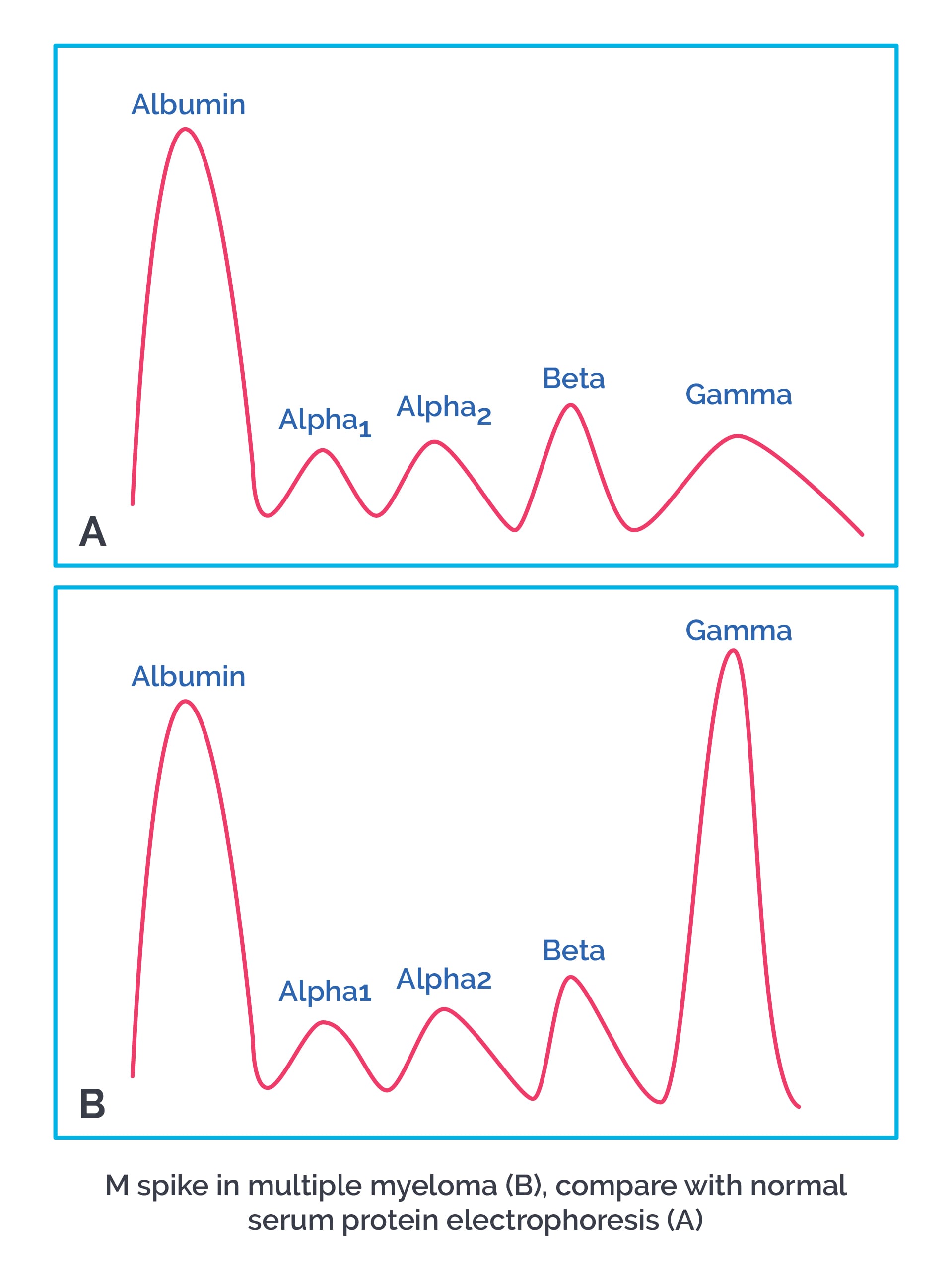Multiple myeloma (MM): It is a malignant, monoclonal proliferation of plasma cells in the bone marrow. It is more common in older, black men. Exposure to X-rays and ionizing radiation increases the risk for MM. Translocations involving chromosome 14 are associated with MM. In MM, malignant plasma cells proliferate, producing excess of M protein, which is typically IgG or IgA and less commonly IgD or IgE. Increased amounts of kappa or lambda light chains , called Bence Jones proteins, will be formed by plasma cells. Bence Jones proteins are precipitated by heating at 40-60 degree C and re-dissolve at 100 degree C. As normal immunoglobulins are not formed sufficiently, immunodeficiency occurs. Osteolytic bone lesions occur due to increased activity of osteoclasts and decreased activity of osteoblasts. Clinical symptoms include fatigue, fever, bone pain, especially in the back, ribs, frequent infections, easy bleeding, fractures, paresthesias and dyspnea. Renal disease can occur from deposition of Bence Jones proteins in the distal convoluted tubule. AL amyloidosis and hyperviscosity syndrome may occur. Increased levels of serum beta 2 microglobulin in patients with multiple myeloma have been associated with a poor prognosis.
Bone marrow biopsy reveals >10% myeloma cells. Myeloma cells may look mature with an eccentric, cartwheel nucleus or immature with prominent nucleus and nucleoli. Dutcher bodies (intranuclear inclusions) and Russel bodies may be present. Myeloma cells are CD138+ and CD56+. Urine will show Bence Jones proteins with either kappa or lambda light chains. Electrophoresis will show abnormal M spike from M protein. ESR is high and correlates directly with prognosis.

Bone marrow biopsy showing >10% myeloma cells can also be seen in smoldering MM (SMM) which is an intermediate clinical stage between MGUS and MM. It lacks the CRAB symptoms seen in MM, although Bence Jones proteins are present in SMM.
MM can rarely progress to plasma cell leukemia. In such a case, >20% of blood cells will be myeloma plasma cells. It also shows involvement of other organs.
Treatment of MM is with combination chemotherapy like melphalan, bortezomib, daratumumab, prednisone, doxorubicin, lenalidomide, interferon therapy and bone marrow transplantation.
Sign up for free to take 2 quiz questions on this topic